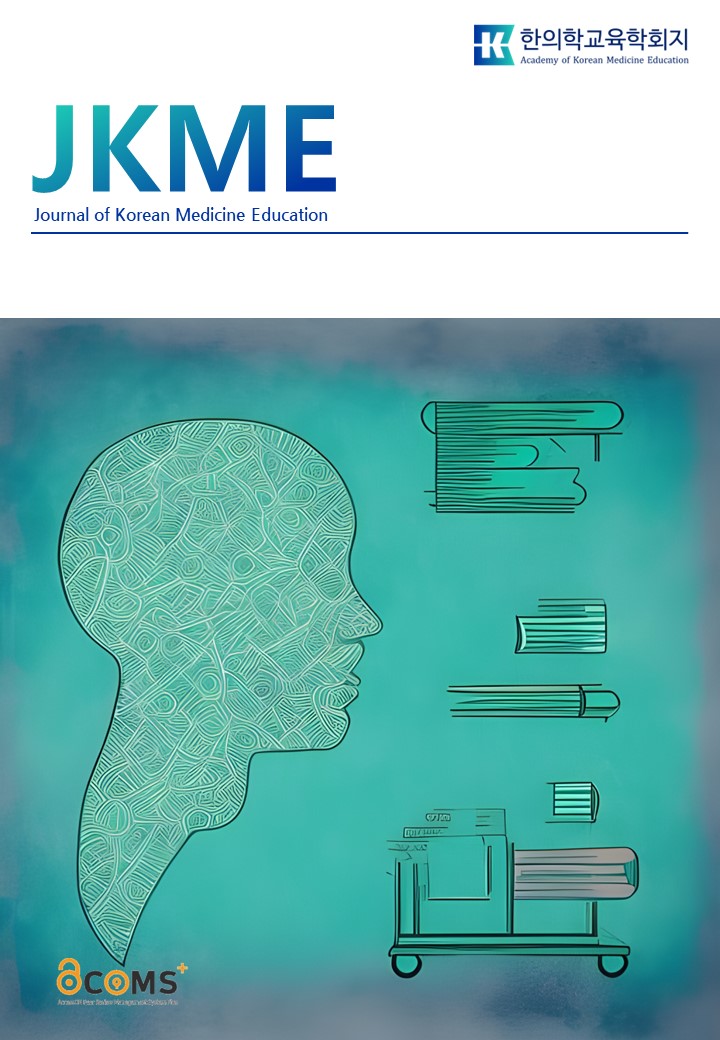한의과대학 실제환자 진료 실습 교육프로그램 매뉴얼 개발
Developing a manual for clinical practice on real patients in Korean Medicine
김예지(Yeji Kim) (원광대학교 한의학과)
하지완(Jiwan Ha) (원광대학교 한의학과)
박준호(Junho Park) (인천광역시 내가보건지소)
정현종(Hyun-Jong Jung) (원광대학교 한의과대학 진단학교실)
Abstract
Background: The necessity of clinical teaching that enables students to encounter real patients before becoming doctors of Korean Medicine has risen to achieve clinical competency. In this study, we present the intention of designing a manual of extracurricular practice in which a student doctortreats a real patient, also a Korean Medicine student, involved in the training program. Methods: We referred to the rapid prototyping of an instructional systems design model to analyze the needs of stakeholders in an existing training program, identify solutions, and design a manual for instructors and organizers of the program. We discussed the current (as-is) and ideal (to-be) education at stakeholder meetings. Information about the existing programs was collected and analyzed. We analyzed the causes of the significant performance issues and derived solutions for designing a program manual. Based on this manual, we implemented the program four times during the first semester of 2022. Results: The expected objectives of the program were: For student doctors to develop clinical reasoning with a therapeutic approach and for patients to learn by experiencing Korean medicine treatment. Different objectives for different grades were set for observers. The primary problem was that the student doctors were concerned about performing clinical practice in front of many students. To address this issue, pre-training for student doctors included practicing history taking, charting medical records, and patient presentations. We developed a program timetable, stakeholder roles, and documents required for the program. Discussion and conclusion: This program, which enables students to learn through the care of a single patient, was designed to strengthen their competencies beyond the optimal patient care required by doctors of Korean Medicine. This program is a format of peer-assisted learning in which student doctors are teachers, and patients and observers are learners. Further studies are needed to promote the participation of real patients in Korean medical education so undergraduates can practice in actual clinical situations.
- keywords
- Clinical skill, Competency-based education, Peer-assisted learning, Real patient, Student doctor
- 투고일Submission Date
- 2023-08-03
- 수정일Revised Date
- 2023-08-22
- 게재확정일Accepted Date
- 2023-08-28
- 다운로드 수
- 조회수
- 0KCI 피인용수
- 0WOS 피인용수


